The unassuming entrance to the 2 million-year-old Black Chasm Cavern near the town of Volcano barely hints at the secret treasures that await below. In order to access them, visitors must navigate 162 stairs in an otherworldly 100-foot descent.
Just a few steps down the first stairwell, a temperature transformation is immediately felt. Designated a National Natural Landmark because of its abundance of rare helictite crystals, the privately run cavern’s consistent sub-60-degree temperature — no matter how hot or cold it is outside — can be jarring, especially on this 90-degree afternoon in early June.
The unassuming entrance to the 2 million-year-old Black Chasm
Cavern near the town of Volcano barely hints at the secret
treasures that await visitors planning to navigate the 162 stairs
into its 100-foot otherworldly descent.

“It’s always at 57, 58 degrees,” says guide Kristopher Larson, who puts on a jacket before beginning the 50-minute walking tour. “In the wintertime, (the constant temperature) is more the cooler air is pushing down, because the air is always trying to equalize. But in the summertime, that cold air doesn’t rise, so the hot air is kind of, like, hitting a boundary.” Likely discovered by local Miwok people before the Gold Rush era and then first explored beginning around 1854 by miners, Black Chasm is a naturally formed vertical (or solution) cave, with its main structure comprised of limestone and marble, also trace elements of iron, manganese and chromium. “It’s created when the Sierra mountains rise up from sea level and hollows out inside the cave with either natural erosion or carbonic acid, and it creates calcite formations inside the cave,” says Larson, who’s guided at Black Chasm for three years. “That’s the reason you come into the cave and see the beautiful formations. The average tourist gets to see 10 different formations, from stalactites to helictites.”
Stalactites, which descend vertically, and helictites, which extend horizontally or diagonally, are rare icicle-shaped formations that hang from the ceiling of a cave or branch out and grow in several different directions. They’re the result of the precipitation of minerals dripping through the cave ceiling, and helictites are found in only an estimated 5 percent of known caves on the planet — just three in the U.S., according to our guide.
Visitors at Black Chasm descend one of the five flights of stairs
during a 50-minute tour on June 7.

Inside the cave from one of the three platforms and five flights of stairs, tourists can take in the view of hundreds of thousands of formations, including some that twist into shapes that look like different animals and figures such as candy canes, butterflies, reindeer and a dragon. The dragon is considered the cave mascot and found in statues in the cavern’s gift shop.
After the Gold Rush, the cave was mostly abandoned, though basic tours were led periodically by a few entrepreneurs in its smaller, front chamber. However, the cavern was still being studied by UC Berkeley speleologists, and the 1976 federal designation was followed about 20 years later when it was fully developed as a show cave with the construction of an extensive array of steps and walkways.
One of the thousands of stalactite formations that can be seen by
visitors to the Black Chasm Cavern.

One of the most viewable sections of rare helictites at the Black
Chasm Cavern, which are found in only an estimated 5 percent of
known caves on the planet – just three in the U.S.

Black Chasm is currently operated by Gold Country Adventures, Inc., which also runs the California Cavern tours in Mountain Ranch about 30 miles away. (California Cavern has more of a horizontal layout.) Guided tours at Black Chasm — with a maximum of 20 people per tour — run daily and are scheduled hourly throughout the year.
While the tour goes 100 feet below ground, the total depth of the cave is 265 feet, Larson says, pointing out that at the 200-foot mark, there’s a 64-foot-deep lake system barely visible to the naked eye. It contains just one species, the shrimp-like amphipod, which has lost its coloration and its eyesight. There’s also a tiny spider that’s only native to Black Chasm, called Banksula grubbsi. It’s similar to a daddy longlegs spider, Larson says, but measures only 1.5 to 2 millimeters.
While the tour goes only 100 feet below ground, the total depth
of the cave is 265 feet, and at the 200-foot mark, there’s a lake
system barely visible to the naked eye.

In addition to the cavern tour, visitors can take a couple of free hikes located near the visitor’s center, including the mile-long “out-of-this-world-looking” Zen Garden Nature Trail. Over 75 feet of dirt was removed there during mining days, exposing stunning bedrock formations, says Judy Wilson, who supervises the approximately 20 employees at Black Chasm.
While California Cavern closes down in the winter because of flooding, Larson says Black Chasm always stays open, even during heavy rainstorms, because the water doesn’t rise to a dangerous level for visitors. As a result, the versatile Black Chasm site is a popular stop for school tours, sometimes running up to 220 students a day through the cavern.
“We do all types of events here in the cave. We’ve even done weddings,” Larson says.
Stay up to date on business in the Capital Region: Subscribe to the Comstock’s newsletter today.
Recommended For You

On a Dark Delta Highway, Ryde Hotel’s Party Legacy Endures
With all the food, fun and spirits, guests may never want to leave
The four-story Ryde Hotel, considered one of the most haunted hotels in Northern California, has been a Highway 160 art deco beacon for almost 100 years.
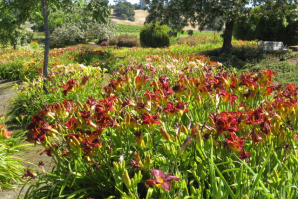
Stop and Smell the Daylilies at Amador Flower Farm
Take a break from wine tasting in the Shenandoah Valley to picnic in a garden
Nestled squarely in the midst of dozens of award-winning wineries that make Amador County’s Shenandoah Valley so unique, Amador Flower Farm in Plymouth is home to something different — an eye-popping 1,300 varieties of daylily.
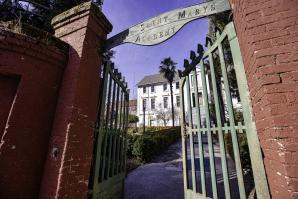
Grass Valley Museum Tells Untold History of Women During the Gold Rush
Industrious nuns, international stars and well-educated orphans
In a county known for its wealth of Gold Rush-era museums, undoubtedly some of the most compelling stories from that time reside at a former orphanage hidden within the 160-year-old walls of the Grass Valley Museum.
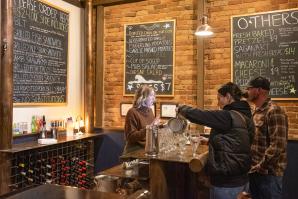
Lotus Pub Is a Low-Key Gourmet Hideaway
A place to take your time by the South Fork of the American River
It’s the first night back after Lotus Pub’s annual two-week holiday break, and at 5 p.m. when the doors swing open on this frigid Friday in January, a line has already formed.
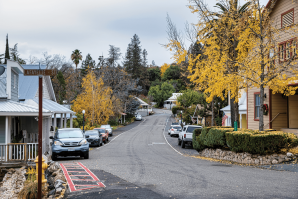
Mokelumne Hill Is Authentic California Gold Country
The entire Gold Rush-era town is a designated historic landmark
Mokelumne Hill may not be the busiest tourist hub in the Amador-Calaveras Sierra Nevada foothills loop that includes Sutter Creek, Jackson, Angels Camp and Murphys. But that doesn’t mean the uniquely well-preserved 1850s Gold Rush-era settlement along the Mokelumne River, often called Moke Hill by the locals, is lacking in things to do and see.
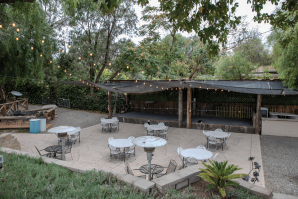
Mountain House Bar & Grill is in the Middle of Gold Rush History
The remote waypoint has served travelers for more than 170 years
It’s a stop for nightly commuters, a biker bar and a family-oriented historical highway landmark, hosting everything from car shows, weddings and baby showers, to taco Thursdays and Wednesday trivia nights.





